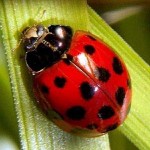READY TO GET STARTED?
REQUEST A FREE ESTIMATE
Fill out the form below or call (888) 466-7849 for a free, no-obligation estimate.
Bats are the only mammals that are actually capable of flight. However, what we consider to be wings are actually elongated fingers with a wing membrane attached. Bat wings are actually far more similar to human hands than they are to bird’s wings. Bats can be found globally, aside from in the extreme polar regions of the earth. Additionally, in many places some species of bat are endangered, whereas others have populations numbering well into the millions.
There are 15 known bat species located in the state of Georgia. One of these species includes the Big Brown Bat, which is found throughout North America. These bats can be found anywhere, but prefer places where they can be well concealed such as under look bark, tree cavities or as many people are used to, inside caves.
Despite popular media, these bats, as well as 70% of the others, are insectivores and eat only insects including wasps, bees, flies and more. Other species of bat include Mexican free-tailed bats, Eastern pipistrelle, the Gray bat, as well as many others. Bats may be by your home if you live in a heavily wooded area or have anywhere they can feel sheltered and well-fed. If you find yourself with unexpected neighbors, our Wildlife Services will come to your aid!
 This past weekend I was outside working in the garden when I came across a few unwanted guests. There were a few spiders, a couple ground beetles, and a large amount of ants. The ants and beetles were present because my garden provides them with a large amount of food and water. The spiders were there because my garden provides them food (the other insects).
This past weekend I was outside working in the garden when I came across a few unwanted guests. There were a few spiders, a couple ground beetles, and a large amount of ants. The ants and beetles were present because my garden provides them with a large amount of food and water. The spiders were there because my garden provides them food (the other insects).
As most of you know the most common insecticides should not be used in gardens. Leaving the everyday gardener to reach out to “over the counter” products from their local nursery or hardware store to help rid them of pests. Although many of these products are effective for short periods of time, they require a minimum time lapse before you can harvest your yield. As many of you know, at Northwest Exterminating we care about protecting your family from pests in the most natural ways possible. And when it comes to the family garden our service technicians are trained to stop the pest before they enter the garden area. That being said, a lot of the garden insects start in the garden area and never leave it – making it hard to control them. So what can you do? Below I have listed some natural ways to help assist you in keeping the pest populations down in your family’s garden this growing season. Following these steps and methods will ensure a healthy garden with minimal pesticide use.
Environmental Tips:
Natural Plantings You Can Add To Help Keep The Pests Down:
We hope some of these tips help you keep your family garden healthier this season! For more information on Northwest’s Pest Control and Lawn Care Services visit us at callnorthwest.com
Adam Vannest
Director of Pest ServicesNorthwest Exterminating
[email protected]
 This past weekend I was outside working in the garden when I came across a few unwanted guests. There were a few spiders, a couple ground beetles, and a large amount of ants. The ants and beetles were present because my garden provides them with a large amount of food and water. The spiders were there because my garden provides them food (the other insects).
This past weekend I was outside working in the garden when I came across a few unwanted guests. There were a few spiders, a couple ground beetles, and a large amount of ants. The ants and beetles were present because my garden provides them with a large amount of food and water. The spiders were there because my garden provides them food (the other insects).
As most of you know the most common insecticides should not be used in gardens. Leaving the everyday gardener to reach out to “over the counter” products from their local nursery or hardware store to help rid them of pests. Although many of these products are effective for short periods of time, they require a minimum time lapse before you can harvest your yield. As many of you know, at Northwest Exterminating we care about protecting your family from pests in the most natural ways possible. And when it comes to the family garden our service technicians are trained to stop the pest before they enter the garden area. That being said, a lot of the garden insects start in the garden area and never leave it – making it hard to control them. So what can you do? Below I have listed some natural ways to help assist you in keeping the pest populations down in your family’s garden this growing season. Following these steps and methods will ensure a healthy garden with minimal pesticide use.
Environmental Tips:
Natural Plantings You Can Add To Help Keep The Pests Down:
We hope some of these tips help you keep your family garden healthier this season! For more information on Northwest’s Pest Control and Lawn Care Services visit us at callnorthwest.com
Adam Vannest
Director of Pest ServicesNorthwest Exterminating
[email protected]
 There are more than 5,000 different ladybug species in the world, known by many different names. Ladybird beetles, lady beetles, ladybirds, God’s cow, lady clock, lady cow, lady fly..these are just to name a few. The easiest way to tell a ladybug from another insect is their appearance: their bodies are always a round or oval dome-shape, they have a hard shell wing that covers their inner wings, and they are able to retract their head like a turtle.
There are more than 5,000 different ladybug species in the world, known by many different names. Ladybird beetles, lady beetles, ladybirds, God’s cow, lady clock, lady cow, lady fly..these are just to name a few. The easiest way to tell a ladybug from another insect is their appearance: their bodies are always a round or oval dome-shape, they have a hard shell wing that covers their inner wings, and they are able to retract their head like a turtle.
Ladybugs leave their summer feeding grounds in fields, forests, and yards and begin to appear indoors in the fall looking for a place to spend the winter. Children love ladybugs because they are easy to catch and they are bright in color. Gardner’s also enjoy them and consider them useful as they eat aphids or insects. Many cultures consider ladybugs lucky and in many countries the sight of a ladybug is either a call to make a wish or a sign that a wish will soon be granted. Ladybugs are the state insect of Delaware, Massachusetts, New Hampshire, New York, Ohio, and Tennessee. They are the official national mascot for the Alpha Sigma Alpha sorority in the United States and the mascot of a ski resort in Spain.
Barry Teubert
Northwest Exterminating
Savannah Service Center Manager
[email protected]
All creatures are capable of fantastic feats, some of which we are accustomed to. Birds fly, fish swim and bees buzz along as they collect nectar. We’re so used to certain animals doing certain things that we marvel when they do something unexpected. After all, wouldn’t it shock you if animals could talk like humans? That is, until you have a conversation with a parrot. Below we feature some creatures you know well and finally get an explanation for how the neat tricks they do!
Squirrels Flying
Flying squirrels aren’t as a familiar as their red or gray sisters because when you’re likely to be sleep when they tend to be out. In North America there are two species of flying squirrel – the northern flying squirrel and the southern flying squirrel. Contrary to what their name suggests, flying squirrels don’t fly because they don’t have wings. They do however, have web-like folds of skin known as patagium which when get taught when they stretch their bodies out and help them glide from high altitudes.
Snakes Swimming
Though some snakes are known specifically for being in the water, all snakes can swim. This may boggle the mind because these creatures have no arms or fins! However, they glide gracefully through the water by moving their body laterally, as if twisting into an ‘S’ shape. These movements start at the head and continue through its body, allowing them to exert a force backwards against the water, effectively moving their bodies forward. Those we typically refer to as water snakes have flatter bodies which make it more efficient for them to swim.
Bugs Walking on Water
Scientists used to believe that bugs secreted a wax on their legs that helped them take advantage of the surface tension of water. Now they believe that insect’s legs have microscopic hairs that trap air bubbles to allow them to float.